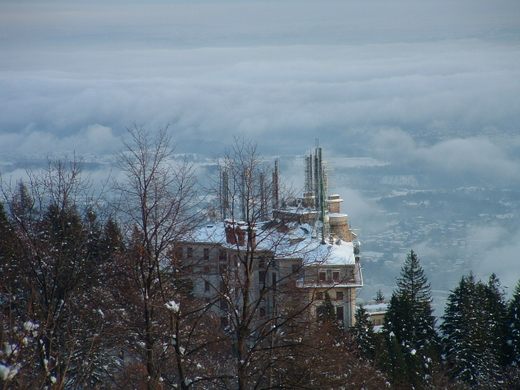Perched atop a mountaintop above Varese, the Grand Hotel Campo dei Fiori exudes a haunting elegance reminiscent of the Grand Budapest Hotel’s charm and the eerie emptiness of the Overlook Hotel.

Built in 1910, the hotel emerged during a peak in Varese tourism as a lavish counterpart to the smaller Palace Hotel. Its elevated location offered a sense of exclusive detachment, accessible only by a steep funicular railroad, a route that visitors can still traverse today.

Renowned art nouveau architect Giuseppe Sommaruga designed the hotel, creating interiors as stunning as the mountain vistas outside. Balconies adorned with wrought iron gargoyles and winding garden pathways illuminated by gas lamps contributed to the hotel’s enchanting allure.

In its early years, the hotel thrived with elite guests, enjoying its luxurious accommodations. However, the disruptions of the First and Second World Wars significantly impacted its business. Over the following decades, the once-popular retreat saw a decline in visitors.

The Grand Hotel Campo dei Fiori closed in 1968 and, despite various revival attempts, remained abandoned. In the 1980s, radio antennas were installed on its roof, which marred the historic building’s appearance but provided necessary funds for maintenance through leasing.

Owned by the Castiglioni family until recently, the hotel was maintained by caretakers who lived alone in the sprawling 200-room structure. The public could only admire the hotel from a distance while hiking through the park or during the annual Feast of the Alpini, celebrating Italy’s traditional mountaineers.

In 2016, a private group led by a former politician acquired the Grand Hotel Campo dei Fiori. Although no detailed redevelopment plans have been released, the group has acknowledged the extensive restoration work required, including installing a sewer system. For now, the hotel remains a picturesque ruin, with occasional organized tours available.

For those unable to visit Varese, the hotel’s haunting beauty can be experienced on screen, having served as a filming location for the 2017 remake of the 1977 horror classic Suspiria.

